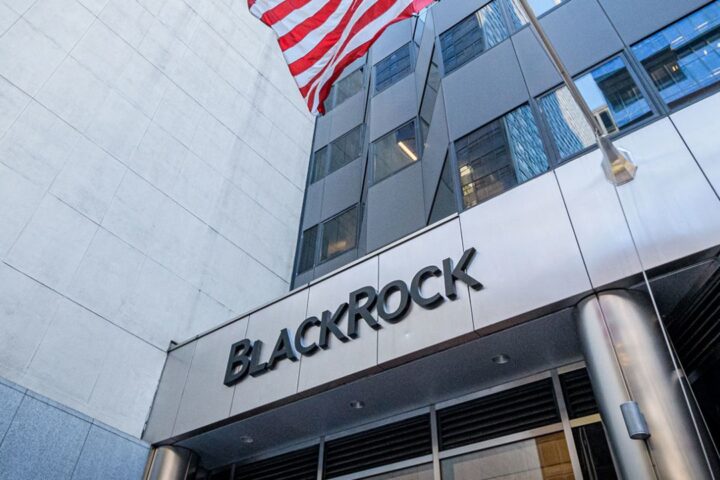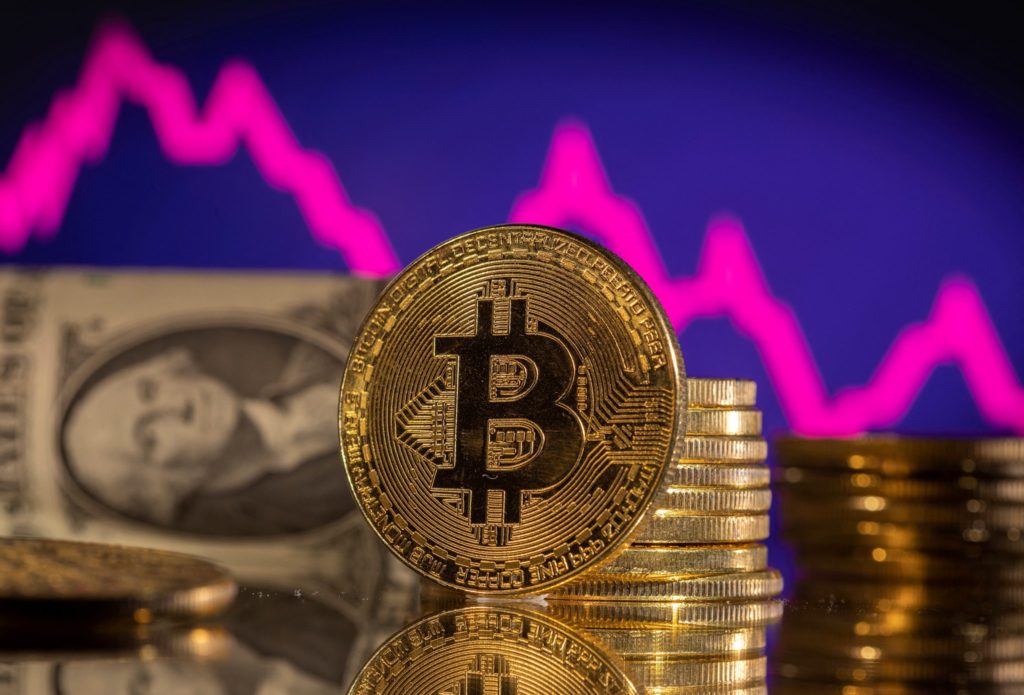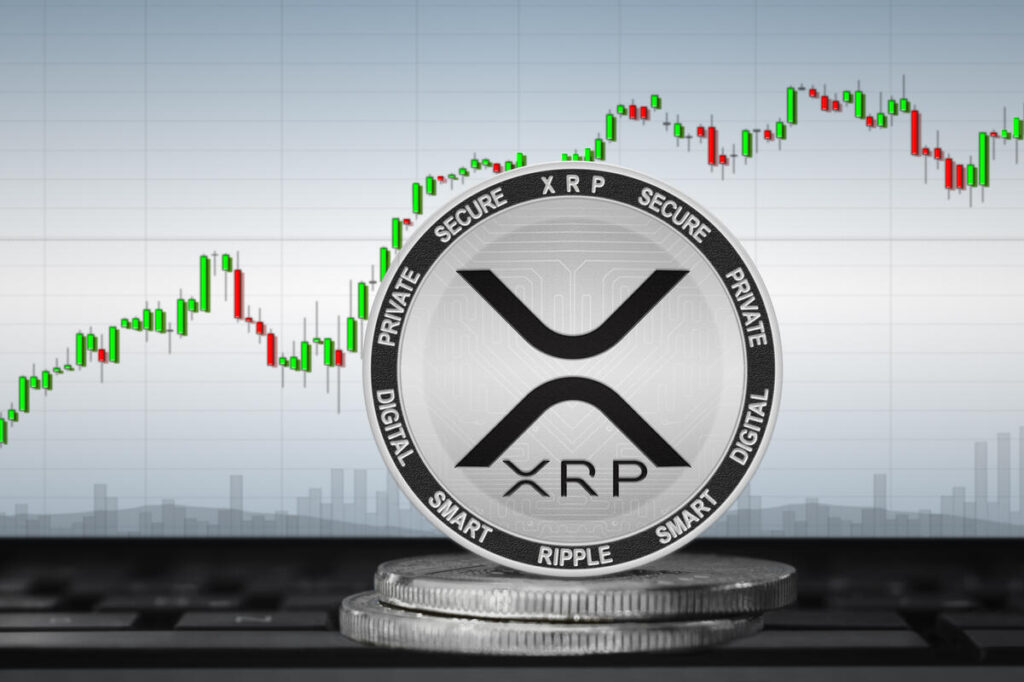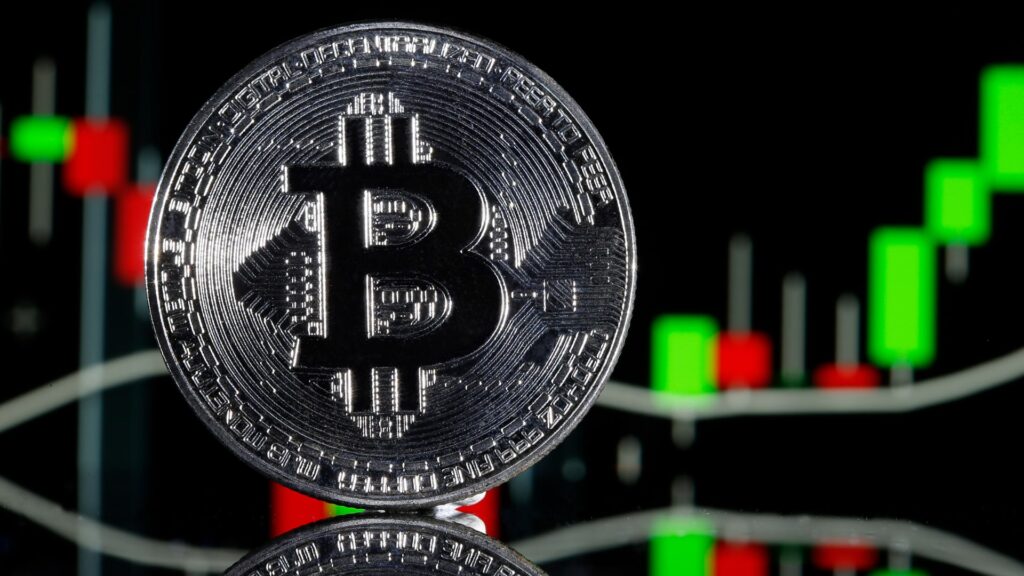Crypto investment products saw their heaviest weekly outflows since February, with $2 billion exiting global exchange-traded products amid falling risk appetite.
CoinShares reported on Monday that crypto ETPs experienced a 71% surge in outflows compared with the prior week, marking the third consecutive week of withdrawals and bringing the three-week total to $3.2 billion.
Monetary Uncertainty and Whale Selling Pressure the Market
James Butterfill, head of research at CoinShares, attributed the outflows to shifting expectations around monetary policy and selling activity from large crypto-native investors.
These factors pushed total assets under management in crypto ETPs down to $191 billion, a notable decline from the October peak of $264 billion.
United States Leads the Outflow Trend
The U.S. accounted for the overwhelming majority of withdrawals, totaling $1.97 billion.
Germany, however, was one of the few markets to see inflows, accumulating $13.2 million, diverging from the broader global pattern.
Outflows Spread Across Multiple Regions
Several other jurisdictions also recorded significant capital flight.
Switzerland saw $39.9 million in outflows, while Sweden lost $21.3 million.
Hong Kong, Australia and Canada posted combined redemptions of $23.9 million.
Bitcoin and Ether ETPs Hit the Hardest
Bitcoin investment products faced nearly $1.4 billion in outflows last week, representing around 2% of total Bitcoin ETP assets.
Ether funds experienced close to $700 million in redemptions, equating to roughly 4% of their total assets.
Smaller Altcoin ETPs Not Spared
Solana ETPs lost $8.3 million, and XRP products saw $15.5 million in outflows, highlighting broad-based weakening across single-asset offerings.
Investors Shift to Diversified and Short-Bias Products
While single-asset funds experienced selling pressure, multi-asset ETPs attracted $69 million in new inflows over the past three weeks.
The trend suggests investors are seeking broader market exposure and lower volatility as macro uncertainty rises.
Short-bitcoin products also gained traction, posting $18.1 million in inflows over the same period, reflecting a modest increase in hedging behavior.
Dogecoin and Shiba Inu underwent sharp volatility on Sunday as the broader crypto market endured another risk-off wave driven by ETF outflows, concerns related to the AI-linked tech bubble, and reduced liquidity across speculative assets.
Meme-tokens saw some of the day’s most aggressive swings, with DOGE staging a forceful rebound and SHIB recovering after initially breaking a key support level.
Although the macro environment dominated sentiment, large-holder behavior diverged between the two assets.
Dogecoin experienced renewed institutional accumulation following two weeks of heavy whale positioning.
Shiba Inu, meanwhile, saw retail-led selling intensify before buyers re-entered the market at intraday lows.
DOGE finished the session up 3.0% at $0.1641.
The token had dropped sharply earlier in the day, falling to $0.1551 before recovering on surging volume.
Trading activity spiked to 613 million during the support test, a level 186% higher than its 214 million average.
DOGE’s rebound pushed the asset above $0.1640, establishing an ascending intraday trendline.
Later trading kept the token within a narrow consolidation range between $0.1638 and $0.1643.
Analysts noted that the higher-lows pattern formed during the recovery signals improving momentum despite market-wide weakness.
SHIB declined 2.0%, slipping from $0.000009233 to $0.000009045.
Heavy selling around 08:00 GMT pushed volumes to 412.35 billion tokens, roughly 67% above typical levels.
The asset bottomed at $0.000008975 before snapping back in a rapid V-shaped recovery.
Around 32.34 billion tokens traded during the reversal, lifting SHIB to $0.000009082 and reclaiming short-term resistance at $0.000009060.
Technical indicators showed divergent setups for the two tokens.
DOGE maintained an intact ascending trendline, with institutional demand supporting the $0.155–$0.161 range.
Key resistance remains at $0.1650, followed by $0.1680.
Analysts say a break above these levels would confirm a short-term bullish continuation.
SHIB preserved triple-tested support at $0.000009020 and reclaimed minor resistance, though its broader daily downtrend — defined by lower highs — remains intact.
A decisive close above $0.000009240 is needed to confirm stabilization.
A fall below $0.000008975 would expose the token to further downside toward the mid-$0.00000870 region.
Market analysts said DOGE’s structure favors further upside if momentum continues, while SHIB remains at a tactical inflection point.
The V-shaped recovery boosts short-term confidence, but longer-term trend reversal will require stronger follow-through.
Imperium Comms, a PR and SEO agency specializing in the blockchain and crypto space, has announced the launch of its new editorial placement service, allowing clients to submit guest posts and press releases to leading business, crypto, tech, and casino/iGaming news outlets.
This expansion marks a significant enhancement of the agency’s integrated communications offering, enabling companies to secure high-authority guest posts, op-eds, and thought leadership articles in top-tier publications that influence key decision-makers and high-intent audiences.
Companies and key opinion leaders interested in submitting a business, crypto, tech or casino guest post should direct their query to J.clifford@imperium-comms.com.
A Strategic Step to Strengthen Brand Authority
The new service is designed for organisations aiming to elevate their visibility in competitive sectors. Imperium Comms has established relationships with a broad roster of mainstream business publications, fast-growing tech and crypto news platforms, and major casino and iGaming industry outlets.
Through these partnerships, clients will gain access to premium editorial opportunities, enabling them to showcase expertise, build trust, and enhance their online presence through authoritative mentions and backlinks.
The agency noted that the expansion reflects growing demand from brands seeking credible, strategic media coverage that supports both PR visibility and SEO performance.
Thought Leadership, Op-Eds & Executive Profiles
As part of the new offering, Imperium Comms will deliver a full suite of content formats for publication, including:
- Executive thought leadership articles
- Opinion editorials
- Industry commentary
- Market analysis pieces
- Founder interviews and profile stories
- Strategic guest posts tailored for SEO impact
Each article is crafted by seasoned editors and strategists to ensure high editorial value and alignment with publisher guidelines.
Expanding Opportunities for Businesses Seeking to ‘Write for Us’
Write for Us
A dedicated component of the service focuses on organisations looking to publish expert content through “write for us” opportunities on high-authority tech, crypto, business and casino news sites.
Imperium Comms will manage the full process — topic development, editorial creation, and placement — ensuring each piece meets publication standards while reinforcing the client’s brand positioning and search ranking performance.
This approach helps businesses bypass the complex and time-consuming process of securing guest post placements while guaranteeing alignment with the editorial tone and compliance requirements of major platforms.
Guest Posts Across Business, Tech, Crypto & iGaming Verticals
The agency’s media network spans multiple high-value sectors:
- Mainstream business outlets covering entrepreneurship, tech, finance, leadership, and corporate strategy.
- Cryptocurrency and blockchain news platforms, ideal for exchanges, Web3 startups, DeFi projects, and institutional players.
- Tech news sites, covering everything from AI to Web 3.0.
- Casino and iGaming news sites that target operators, affiliates, game providers, and industry executives.
This broad range ensures that brands in dynamic, fast-moving industries can position themselves effectively and reach audiences with strong buying intent.
A Full-Service PR Solution for Modern Brands
With this launch, Imperium Comms continues to evolve as a comprehensive communications partner offering:
- PR and media outreach
- Content creation
- Editorial strategy
- SEO-driven publications
- Guest post acquisition
- Reputation building initiatives and crisis management
For media inquiries or partnership opportunities, please send an email to J.clifford@imperium-comms.com.
Coinbase is reintroducing U.S. retail investors to regulated crypto fundraising through a new platform dedicated to primary token offerings, marking the first such opportunity since the 2018 ICO boom.
The American exchange announced it will launch the initiative later this month, aiming to restore public participation in early-stage crypto projects under strict compliance controls.
The first token to debut on the new platform will be from Monad, a blockchain protocol whose sale will run from November 17 to 22, as Bitzo reported.
Coinbase plans to host roughly one token sale per month going forward, creating a structured, recurring schedule for new digital asset launches.
A Fairer Model for Token Distribution
Each token sale will be open for one week, during which verified users can submit purchase requests.
Once the sale period ends, Coinbase’s allocation system will prioritize smaller buyers first, gradually expanding to fill larger orders.
This approach, the company said, is meant to ensure broader participation and prevent large investors from dominating the process.
Coinbase has also added a mechanism to discourage rapid speculative selling.
Users who immediately offload their tokens after launch will see their allocation potential reduced in future offerings.
The exchange described the system as a way to promote fairer distribution and reduce “dumping” behavior that has historically plagued public token sales.
Compliance and Settlement in USDC
Only verified Coinbase users will be eligible to participate, and all purchases will be settled in USDC, the dollar-backed stablecoin issued by Circle.
Token issuers listing through the platform will face a six-month lockup period, preventing project founders and affiliates from selling or transferring tokens on secondary markets without Coinbase’s prior approval and public disclosure.
This restriction aims to maintain price stability and protect investors from insider selling shortly after launch.
Participation will be free for retail buyers, but token issuers will pay a fee based on the total amount of USDC raised, along with any associated listing costs.
Renewed Access for U.S. Retail Investors
The move represents a major milestone for the U.S. crypto sector, where retail access to regulated public token offerings has been virtually nonexistent since 2018.
Coinbase’s regulated approach seeks to fill a long-standing gap between private fundraising rounds—typically reserved for venture capitalists—and the broader investing public.
By implementing compliance safeguards and transparent rules, the platform could set a precedent for how token sales are conducted in the United States going forward.
Remembering the ICO Boom and Its Collapse
Coinbase’s new offering arrives years after the spectacular rise and fall of the Initial Coin Offering (ICO) era.
ICOs emerged in 2017 as a novel method for blockchain startups to raise capital directly from the public by selling newly minted tokens.
By the first half of 2018, ICOs had raised an estimated $13.7 billion, more than double the total collected in 2017.
However, the boom quickly attracted regulatory attention.
In 2017, the U.S. Securities and Exchange Commission (SEC) signaled that some tokens could qualify as securities under the Howey test, bringing them under existing investment laws.
A 2018 report by Ernst & Young examined over 140 major ICOs and revealed that 86% of tokens were trading below their launch prices within a year, while nearly a third had lost almost all their value.
The combination of regulatory crackdowns, investor losses, and a deep crypto bear market effectively ended the ICO frenzy.
Coinbase’s Attempt to Modernize the ICO Model
By introducing transparency, compliance oversight, and anti-dumping mechanisms, Coinbase appears to be reviving the ICO model with institutional-grade safeguards.
If successful, the platform could usher in a new era of compliant token fundraising, bridging the gap between the innovation of crypto’s early days and the regulatory expectations of today’s markets.
Earlier this month, Coinbase clashed with several US banks over a key stablecoin interest rule as part of the recently passed GENIUS Act.
French crypto hardware wallet provider Ledger is exploring a potential listing in New York as demand for its devices surges due to escalating cyberattacks.
The company, founded in Paris in 2014, has reported record revenues in 2025, reaching triple-digit millions, driven by both individual and institutional demand.
CEO Pascal Gauthier told the Financial Times that this year has been the company’s strongest yet, as hackers increasingly target digital assets.
“We’re being hacked more and more every day … hacking of your bank accounts, of your crypto, and it’s not going to get better next year and the year after that,” he said.
Crypto Thefts Hit New Highs
The surge in Ledger sales coincides with a record year for crypto-related thefts.
According to Chainalysis, hackers stole $2.2 billion worth of digital assets in the first half of 2025, surpassing the total losses recorded in all of 2024.
Approximately 23% of these attacks targeted individual wallets, highlighting the growing need for secure hardware solutions.
Ledger Secures $100 Billion in Bitcoin
Gauthier revealed that Ledger currently secures around $100 billion worth of Bitcoin for its customers.
He also suggested that the company may benefit from seasonal spikes in sales during Black Friday and the Christmas period.
Looking ahead, Ledger plans to raise funds in 2026, either through a private funding round or a US listing.
The company is increasing its New York headcount, with Gauthier noting, “money is in New York today for crypto, it’s nowhere else in the world, it’s certainly not in Europe.”
Competitors such as Trezor and Tangem offer similar “cold storage” wallets, but Ledger remains the market leader.
The company was last valued at $1.5 billion in 2023, with backing from 10T Holdings and True Global Ventures.
Multisig App Upgrade Sparks Debate
Last month, Ledger launched a new multisignature (multisig) interface, receiving mixed reactions from its user base, as reported by Bitzuma.
While many praised the upgrade as a technical improvement, the new fee structure—including a $10 flat fee per transaction and a 0.05% variable fee for token transfers—drew criticism.
Developers such as pcaversaccio accused Ledger of moving away from its Cypherpunk roots, arguing the app has become a centralized “choke point” aimed at extracting revenue from users.
Binance co-founder Changpeng “CZ” Zhao has denied claims that his presidential pardon from Donald Trump was influenced by financial or political ties, saying he was as surprised as anyone when the news broke.
Speaking to Fox News on Friday, CZ revealed that he had never personally met Trump before or after the pardon was issued in October.
“I never physically met or spoke with Trump,” he said, adding that the only interaction with the Trump family was a single encounter with Eric Trump during the Bitcoin Middle East and North Africa conference in Abu Dhabi.
“There is no business relationship between me, Binance, and World Liberty Finance,” Zhao stated.
He explained that he was unaware of the pardon’s progress throughout the process, saying: “I did not know when or if it was going to happen. I believe my lawyers submitted the petition in April, and it took a few months. I didn’t know the progress. There was no indication of how far it went along, etc. Then, it happened one day.”
Mixed Reactions and Political Backlash
The pardon drew polarized reactions.
Supporters within the crypto community hailed it as a positive signal for digital assets and a break from what they described as the Biden administration’s anti-crypto stance.
However, Democratic lawmakers quickly criticized the decision, accusing Trump of corruption and self-interest.
During a press briefing following the pardon, Trump said he didn’t know CZ personally but was informed that the case against him was politically motivated.
“He had a lot of support, and they said that what he did is not even a crime, it wasn’t a crime. He was persecuted by the Biden administration,” Trump remarked.
Democrats Question Pardon Motives
Representative Maxine Waters led accusations that Trump’s decision may have been linked to financial contributions from the crypto sector.
Waters claimed Trump engaged in a “pay-to-play” arrangement, suggesting the pardon was in exchange for potential investments in ventures tied to the Trump family, such as World Liberty Financial (WLFI).
Several Democratic senators, including Elizabeth Warren and Bernie Sanders, signed a letter addressed to Attorney General Pam Bondi, calling for an investigation into the circumstances surrounding the pardon.
The lawmakers demanded transparency about communications between Trump’s campaign, Binance, and associated financial entities.
While speculation continues, CZ maintains that his pardon was handled legally through his attorneys and that no financial arrangements were made or discussed.
Cathie Wood’s ARK Invest has increased its exposure to Tom Lee’s Ether treasury firm BitMine while reducing its holdings in Tesla.
According to the firm’s daily trading disclosures on Friday, ARK purchased 48,454 shares of BitMine, worth roughly $2 million.
The shares were acquired across three of ARK’s ETFs: ARK Innovation (ARKK), ARK Fintech Innovation (ARKF), and ARK Next Generation Internet (ARKW).
Wood’s funds have been steadily adding to BitMine positions since April, when the company began accumulating Ether as a treasury asset.
BitMine shares rose 7.65% in after-hours trading to $40.23, marking a year-to-date gain of 415%, according to Google Finance.
Tesla stake reduction
At the same time, ARK sold around 71,638 Tesla shares across its funds, a position valued at about $30 million based on Tesla’s closing price of $429.52.
The ARKK and ARKW ETFs both reduced their Tesla holdings.
Tesla has been a cornerstone of ARK’s portfolio since 2018.
The move follows shareholder approval of CEO Elon Musk’s nearly $1 trillion pay package, with 75% of voting shares in favor despite opposition from proxy advisors Glass Lewis and ISS.
The package, announced at Tesla’s annual meeting in Austin, Texas, will boost Musk’s ownership from roughly 13% to 25% if Tesla meets certain milestones.
Musk will receive 12 tranches of stock tied to performance goals, starting at a $2 trillion market cap and scaling to $8.5 trillion.
BitMine faces significant unrealized losses
BitMine is currently sitting on about $2.1 billion in unrealized losses linked to its Ether reserves, following the crypto market downturn, according to CryptoQuant.
The company holds nearly 3.4 million ETH, having acquired over 565,000 in the past month.
XRP has fallen sharply following Ripple’s annual Swell conference, erasing much of the brief rally seen during the event.
After reaching highs near $2.40 on November 5, XRP dropped over 9% to $2.19, despite several major announcements by Ripple, including a $500 million funding round led by Citadel Securities and Fortress Investment Group.
The company also unveiled new integrations for its RLUSD stablecoin and hinted at a decentralized lending protocol on the XRP Ledger (XRPL).
“Buy the Rumor, Sell the News” Trend Persists
The decline reflects a familiar pattern where XRP tends to fall after Ripple’s flagship event — a trend observed in four of the past five years.
Historically, XRP has posted negative returns between the Swell conference and year-end, as investor excitement fades following the announcements.
Technical Indicators Signal Further Downside
The broader crypto market’s pullback, including Bitcoin’s dip below $100,000, has also weighed on altcoin sentiment.
Technically, XRP’s recent price action has confirmed a bearish “flag” pattern, compounded by an impending death cross — when the 50-period exponential moving average drops below the 200-period EMA.
It’s no use going back to yesterday, because I was a different person then. In the beginning God created the heaven and the earth. It’s the possibility of having a dream come true that makes life interesting.
This setup suggests the potential for XRP to fall toward the $1.65–$1.70 range, aligning with previous support levels from April.
Tokyo-listed Bitcoin treasury company Metaplanet has secured a $100 million loan backed by its Bitcoin holdings.
The funding, disclosed in a Tuesday filing, was borrowed on October 31 under a credit agreement that allows the company to use its Bitcoin as collateral for short-term financing, amid BTC dropping in the last week.
Metaplanet did not reveal the lender’s identity but confirmed the loan carries a benchmark US dollar rate plus a spread and can be repaid at any time.
The company described the structure as conservative, noting it holds 30,823 BTC, valued at roughly $3.5 billion as of the end of October.
Metaplanet said this position is large enough to maintain strong collateral coverage even if Bitcoin’s price declines.
Loan Proceeds to Support Bitcoin Purchases and Share Buybacks
Proceeds from the credit line may be deployed in several areas, the company said.
These include additional Bitcoin purchases, its Bitcoin income business — where holdings are used to earn option premiums — and share repurchases, depending on market conditions.
Shares in Metaplanet fell 2% following the announcement.
The move comes just days after the company unveiled a 75 billion yen ($500 million) share buyback program.
Like the recent loan, the buyback program is also backed by Bitcoin-collateralized financing.
Metaplanet said the program is designed to restore investor confidence after its market-based net asset value (mNAV) fell below 1.0.
mNAV Dip and Company’s Acquisition Plans
The mNAV, a metric comparing the company’s market value to its Bitcoin holdings, briefly dropped to 0.88 last month.
It has since rebounded to above parity, according to the company.
During the dip, Metaplanet temporarily paused new Bitcoin purchases but reiterated its commitment to acquire 210,000 BTC by 2027.
The company expects the financial impact of the $100 million drawdown on its 2025 fiscal results to be minor.
It also pledged to disclose any material changes to investors should they arise.
Market Context: Bitcoin Treasury Companies
Metaplanet’s move occurs amid wider scrutiny of Bitcoin treasury firms.
Last week, S&P Global Ratings assigned a “B-” speculative-grade rating to Michael Saylor’s Bitcoin treasury company, Strategy.
S&P cited heavy Bitcoin concentration, limited liquidity, and a narrow business focus as key weaknesses.
Critics have increasingly questioned the crypto treasury model.
A report from 10x Research noted that some Bitcoin treasury companies have seen their net asset values collapse, erasing billions in paper wealth.
Analysts argued that the boom in Bitcoin treasury firms, which issued shares at multiples of their actual Bitcoin value, has “fully round-tripped,” leaving retail investors with losses while firms accumulated real Bitcoin.
Investor Takeaways
Metaplanet’s $100 million Bitcoin-backed loan and share repurchase program reflect a broader strategy to maintain investor confidence and expand its BTC holdings.
The company’s large Bitcoin position provides a buffer against market volatility, allowing it to secure financing while continuing operations.
Investors should note, however, that Bitcoin treasury companies carry inherent risks, including high concentration in a single volatile asset and dependency on market sentiment.
The recent attention from credit rating agencies and research firms underscores the importance of monitoring liquidity, collateral coverage, and net asset value trends.
The Ethereum Foundation (EF) has restructured its long-running grants initiative, replacing the open application system with a more focused model under the Ecosystem Support Program.
Announced in a blog post Monday, the new structure will channel funding through two avenues: a “wishlist” of focus areas identified by EF teams, and formal requests for proposals (RFPs) addressing specific ecosystem needs.
A Shift Toward Strategic Coordination
The previous open grants process, paused earlier this year, had stretched the Foundation’s administrative capacity due to high demand.
According to EF, the revamped program will better align funding decisions with Ethereum’s long-term priorities by coordinating directly with internal technical and research teams.
“The previous open grants program successfully supported hundreds of projects that contributed key building blocks across Ethereum,” the Foundation said. “But the growing volume of applications limited our ability to pursue strategic opportunities.”
The first batch of wishlist items and RFPs is now available, covering areas such as cryptography, privacy, scalability, and community growth.
In 2024, the Foundation awarded around $3 million to 105 projects and initiatives, continuing its mission to foster open-source innovation since the program’s 2018 launch.
Ethereum’s Technical Upgrades Continue
The update comes just after Ethereum’s Fusaka upgrade went live on its final testnet, Hoodi, ahead of a mainnet launch expected December 3.
Fusaka introduces EIP-7594 (PeerDAS), allowing validators to access smaller data chunks from layer-2 networks, improving efficiency and scalability.
Additional proposals, EIPs 7825 and 7935, aim to increase gas limits and boost performance in preparation for Ethereum’s shift to parallel execution — a critical milestone that will allow multiple transactions to process simultaneously.
Ethereum’s last major upgrade, Pectra, launched on May 7, introduced staking optimizations and wallet enhancements, underscoring the network’s ongoing technical evolution.












